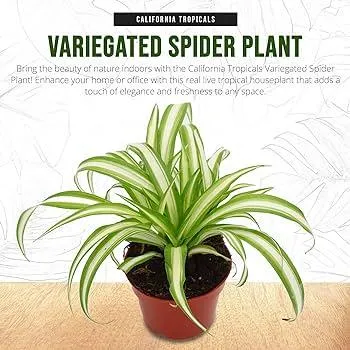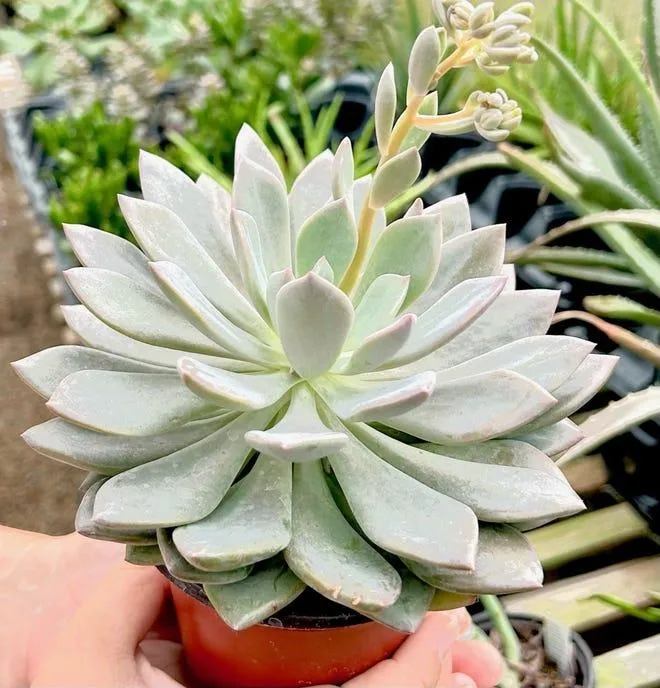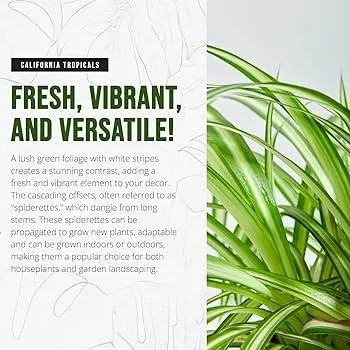
Variegated House Plants: Care for Your Unique Indoor Greens
A Guide to Choosing and Caring for Variegated Houseplants
If you’re looking to add some unique visual interest to your indoor plant collection, variegated houseplants are a great option to consider. Their foliage patterns come in a variety of colors and designs that really make them stand out. However, variegation can sometimes make plants more difficult to care for properly. In this article, I’ll provide an overview of different types of variegated plants as well as tips for giving them what they need to thrive.
What makes a plant “variegated”?
Variegation refers to any distinctive patterning or markings on plant leaves, stems or flowers that differ from the normal, uniform coloration. This is usually caused by a genetic mutation that prevents someareas of a plant from producing chlorophyll, which is responsible for the typical dark green hue. Without chlorophyll, these sections remain pale, cream or white. Variegation can create stripes, spots, portions of different shades or a mottled appearance.
Popular variegated houseplant options
Here are some commonly available variegated indoor plants worth considering:

- Pothos – Easy care vine with heart-shaped leaves marked by white, yellow or pink. Several cultivars like ‘Marble Queen’ and ‘N’Joy’ are very popular.
- Philodendron – Tough climber perfect for trailing from hanging baskets. Try ‘Brazil’ with cream stripes or ‘Pink Princess’ with reddish leaves.
- Monstera – Iconic tropical plant known for its huge, fenestrated leaves. Variegated types like ‘Thai Constellation’ command high prices but are sought after for their ornate patterns.
- Chinese evergreen – Slow growing but long-lasting foliage plant. ‘Tricolor’ features zones of pink, cream and green.
- Peperomia – Varieties like ‘Rosso’ have red veins contrasting its green and white splotches. Low maintenance herbaceous perennials.
Caring for variegated beauties
While variegated plants can add interest visually, their care often differs from their solid green counterparts due to the reduced or absent chlorophyll in the pale sections. Here are some tips:
- Light – Most variegated plants require significantly brighter light than typical houseplants. Place in an east or west facing window.
- Water – Be extremely careful not to overwater, as soggy soil can cause the non-green parts to rot. Water only when the top 1-2 inches feel dry.
- Fertilizer – Use a diluted, water soluble fertilizer every few weeks in the growing season. The pale sections have weaker nutrient intake abilities.
- Pruning – Periodically remove sections that develop more white than green to promote new growth. This can prevent overall decline of the plant.
- Pests – Variegated plants may be more vulnerable to attacks from pests like spider mites, due to their suboptimal health. Keep a close watch and spray with insecticidal soap if spots appear.
Potential challenges with variegation
While variegation increases visual interest, it does come along with some potential drawbacks:
- Growth tends to be slower since the plant has less ability to photosynthesize compared to all-green counterparts.
- Some variegated cultivars may spontaneously “revert” over time, growing back with all-green foliage instead of the pattern.
- Pale sections are more vulnerable to leaf loss if stressed. Nurseries sometimes intentionally limit root growth to discourage this.
- Rare specimens fetch high prices but are prone to declining if care isn’t adapted to their temperamental needs. Research is essential before spending.
Final tips for success with variegated beauties
With diligent care, many variegated plants can become long-term indoor companions. Here are some last bits of advice:

- Start with hardier, easy to find cultivars like pothos or philodendron until gaining experience versus investing in temperamental rarities right away.
- Use a humidifier, especially in winter months, to prevent damage to delicate pale areas from dry indoor air.
- Consider supplementing lighting with a grow light if windows lack brightness. This really helps with growth and preventing reversion.
- Be patient – these beauties may grow slower than their all-green counterparts. Focus on preventing health issues over time.
With a bit of extra TLC, variegated foliage can really add visual drama all year long. Taking into account their special needs can ensure many seasons of enjoyment. Give one of these statement makers a try – you may find a new favorite plant to pique your gardening interests! Let me know if you have any other questions.
Variegated House Plant Care Guide
| Plant | Light Needs | Water | Size | Care Tips | Variegation Pattern |
|---|---|---|---|---|---|
| Zebra Plant | Bright Indirect | Let Dry Between | Up to 3 Feet | Prone to Mealybugs | Stripes |
| Chinese Evergreens | Low Light | Let Dry Slightly | Up to 2 Feet | Propagate by Stem Cuttings | Blotches |
| Pothos | Low to Medium | Let Almost Dry | Vining | Tolerates Neglect | Splotches |
| Marble Queen Pothos | Bright Indirect | Let Partly Dry | Vining | Prone to Leaf Yellowing | Marbled |
| Variegated Monsteras | Medium to Bright | Let Slightly Dry | Up to 6 Feet | Supports climb on poles | Blotches |
FAQ
-
What kind of plants get variegated leaves?
Lots of different plants can kind of have variegated leaves. Some common types are African violets, spider plants, and snake plants. Houseplants like pothos are also known for their cool white and green leaves.
-
Why do some plants have variegated leaves?
The variegation comes from a genetic mutation that impacts leaf pigment production. While most plants use chlorophyll to make their leaves green, variegated ones don’t produce as much in certain areas. This allows other colors like white or yellow to show through. The exact cause is still debated by plant biologists!

-
Are variegated plants harder to care for?
For the most part, variegated plants have similar care needs as their solid colored counterparts. However, their lighter parts may burn more easily in strong sun. VARIEGATED houseplants basically need moderate light and don’t dry out as fast as others. You also gotta be careful not to overwater them. As long as you meet their basic needs, these unique plants can thrive.
-
Will a variegated plant keep its pattern?
Sometimes variegation can remain stable throughout a plant’s life. Other times, the pattern may change or even disappear in future generations. Seems the plant’s genetic mixture plays a role. You can try propagating leaf cuttings to “lock in” a pleasing pattern. But as the plant grows, perhaps the unique curves will morph a bit like a picture coming into focus. Only time will tell!
-
Are solid or variegated plants harder to find?
Because variegation occurs randomly, solid colored houseplants are usually more common at local nurseries and garden centers. But online, the selection of variegated beauties has exploded with Etsy and specialty sites. While hunting for that perfect leaf pattern may require sorting through many options, the challenge of locating rare varietals is part of the fun! At the same time, don’t forget solid plants have their own simple charm.

-
Should I display or hide damaged variegated leaves?
It’s a judgement call whether to keep or toss leaves with imperfections. Minor areas may add character, like freckles on a person. But large wounds invite pests. Unfortunately, light spots are prone to sunburn so damaged foliage should maybe go in the trash. Your plant’s health matters most—ask an expert if you’re unsure. A variegated beauty is only as good as how it grows. So handle each leaf with care like fine china.
-
Is it worth paying more for a variegated plant?
Variegated houseplants often cost significantly higher than solid counterparts. But is it worth it? That depends how you define “worth.” The answer may vary person to person. For collectors seeking a specimen with stunning patterns, premium prices could very will be reasonable. However, for others, an affordable workhorse plant may serve the same purpose with less fuss. In the end, the choice depends on your priorities and gardening style. Perhaps start with a standard variety and see if you’re hooked before diving into rarer cultivars!
-
Do variegated plants make good gifts?
With their unique appearance, variegated specimens can strike people as rather amazing gifts.The colorful leaves offer a stunning talking point for any home. However, there’s also a responsibility when giving live plants. Be sure your recipient has an appropriate space and is willing to care for it long term. A care card and your contact info in case of questions are good extras to include. With these considerations in mind, a special variegated houseplant presents both a thoughtful idea and beautiful conversation starter for the right plant-loving friend.